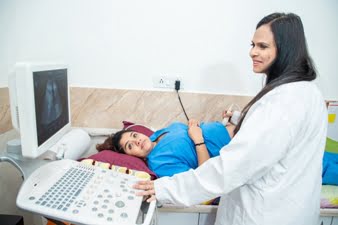Why is a Pregnancy Anomaly Twins Study Important?
1. Detailed Assessment of Fetal Development: This scan provides a comprehensive evaluation of each baby’s anatomy, including the brain, heart, spine, kidneys, stomach, limbs, and other vital organs. It helps detect structural abnormalities like neural tube defects, heart defects, and cleft lip/palate.
2. Monitoring Growth and Development: For twin pregnancies, monitoring growth is crucial because twins are at a higher risk of complications like intrauterine growth restriction (IUGR). The scan helps assess whether both babies are growing at a similar rate and identifies any discrepancies in size or weight.
3. Checking for Twin-Specific Complications: Twin pregnancies can present unique challenges, such as twin-to-twin transfusion syndrome (TTTS), where one baby receives more blood than the other. The anomaly scan helps identify such issues early, allowing for timely intervention.
4. Evaluating Placenta and Amniotic Fluid: The scan examines the placenta, its location, and the number of placentas present (which can indicate whether the twins are identical or fraternal). It also assesses the amniotic fluid levels around each baby to ensure there are no issues like oligohydramnios (low fluid) or polyhydramnios (excess fluid).
When is the Anomaly Twins Study Performed?
The anomaly scan for twins is typically conducted between 18 to 22 weeks of pregnancy. This timeframe allows for a detailed examination of fetal structures as most organs and body parts are well-developed by this stage.
Who Should Consider a Pregnancy Anomaly Twins Study?
A pregnancy anomaly twins study is recommended for:
1. All Twin Pregnancies: This is a routine part of prenatal care for women expecting twins, as twin pregnancies carry a higher risk of complications compared to single pregnancies.
2. Women with High-Risk Factors: Women with high-risk factors, such as advanced maternal age, family history of congenital anomalies, or existing medical conditions, should have this scan to monitor fetal health closely.
3. Couples with Previous Pregnancy Complications: If there were complications in a previous pregnancy, such as a history of fetal anomalies or loss, an anomaly scan can provide reassurance and early detection of potential issues.









